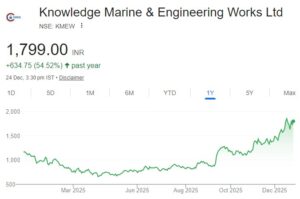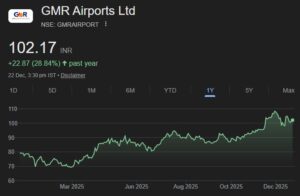

Sanjoy Bhattacharyya, in his Forbes article “How to build a robust portfolio” points out that the first thing investors have to decide is whether they want to have a “concentrated portfolio” or a “diversified portfolio”. The advantage of a diversified portfolio is a feeling of safety. Even if a few stocks turn out to be duds, the investor will have his head above water. However, the disadvantage is that the performance of the portfolio will be mediocre because even if you are lucky to garner a couple of multibagger stocks, the overall impact on the portfolio is minimal.
Sanjoy Bhattacharyya suggests that investors must not go by a fixed formula but must choose the investing style they are comfortable with. The important thing is that investors must understand the business that they are buying and the price that they are paying for it. He quotes the pithy words of Warren Buffett “I want to be able to explain my mistakes. This means I do only the things I completely understand.”
Sanjoy Bhattacharyya advises investors to have a sensible approach and choose the middle path between extreme concentration and extreme diversification. He suggests that investors buy only that many stocks as they can keep an eagle eye on. He also reminds investors to periodically review their portfolio so as to pull out the weeds and water the roses.
Here, I cannot resist making a reference to Rakesh Jhunjhunwala’s technique of portfolio allocation. Rakesh Jhunjhunwala has a winning mix of both – a concentrated portfolio and a diversified portfolio. While his winning stocks are just 5 in number and contribute a mammoth 85% + of the net worth, his trial stocks are numerous in number but constitute a fraction of the net worth. It is this masterful method of portfolio allocation that has ensured that though Rakesh Jhunjhunwala suffered a debilitating loss of Rs. 1,000 crores (on his trial stocks portfolio), his concentrated portfolio of winning stocks ensured that his position as a Forbes billionaire remained intact.
Sanjoy Bhattacharyya points out that the other important thing that investors have to be clear about is whether they want to be “lump sum” investors or “systematic investment plan (SIP)” investors. He explains that the advantage of the SIP or “rupee cost averaging” method is that investors get to spread out their purchases regularly over time and get an average price. However, the downside of this is that during extended bull markets investors are forced to add (albeit lesser and lesser quantities) to their positions at steadily increasing price levels and this leads to poor performance.
Sanjoy Bhattacharyya makes it clear that his personal preference, given his certified status as a “value investor“, is to wait patiently for his preferred stocks to fall to a level where there is clear-cut undervaluation and then to buy as many shares as he can afford. Sanjoy Bhattacharyya is not in favour of putting his investment decisions on “autopilot” where the market takes charge of the portfolio allocation. He calls the idea of putting the portfolio of auto-pilot and remaining oblivious to price and spreading purchases over an extended period “utterly senseless“. He emphasizes that a thoughtful investor should never depend on trial and error in arriving at portfolio decisions.
Here, one must note that Sanjoy Bhattacharyya’s views are in sharp contrast to that of the original doyen of value investing Benjamin Graham. In his treatise “The Intelligent Investor“, Benjamin Graham lauded the advantages of the Systematic Investment Plan in the following words:
“No one has yet discovered any other formula for investing which can be used with so much confidence of ultimate success, regardless of what may happen to security prices, as Dollar Cost Averaging.”
On the important question as to how to buy stocks for the portfolio, Sanjoy Bhattacharyya again quotes Warren Buffett’s priceless advice “Your goal as an investor should simply be to purchase, at a rational price, a part interest in an easily understandable business whose earnings are virtually certain to be materially higher five, 10, and 20 years from now. Over time, you will find only a few companies that meet these standards—so when you see one that qualifies, you should buy a meaningful amount of stock. You must also resist the temptation to stray from your guidelines: If you aren’t willing to own a stock for 10 years, don’t even think about owning it for 10 minutes. Put together a portfolio of companies whose aggregate earnings march upward over the years, and so also will the portfolio’s market value.”
Sanjoy Bhattacharyya amplifies Warren Buffett’s advice by pointing out that what investors have to do when choosing stocks is to aim to minimise risk in each individual stock. This is possible if they have a clear understanding of what business they are buying and what is the fair price for it. He also points out that if investors have a clear personal understanding of the business, then the sector composition is immaterial.
On the type of companies to buy, Sanjoy Bhattacharyya suggests that investors must own companies with a lower cash-flow payback period and with a financial position (balance sheet) that has the capacity to survive high levels of financial and operating adversity caused by unanticipated changes. Of course, the most important thing is that the senior management must be capable of disciplined and rational capital allocation over the long-term.
Unfortunately, Sanjoy Bhattacharyya did not give a list of stocks that meet his criteria.





